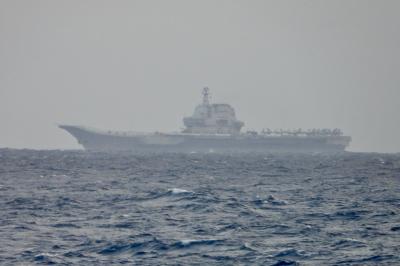Wall Street returns from vacation season to enter what is historically the most perilous period of the year amid conflicting signals on the US’ economic outlook.
Trade over the past week was choppy as investors reacted to various data that pointed toward both economic weakness and strength.
In the week to Friday, the blue-chip Dow Jones Industrial Average gave back 0.72 percent to finish the week at 11,543.96.
The broad-market Standard & Poor’s 500 index lost 0.73 percent to 1,282.83 and the technology-heavy NASDAQ composite shed 1.95 percent to 2,367.52.
The main indexes closed lower for the week but held onto gains for a strong August. The Dow rose 1.92 percent, the NASDAQ 2.44 percent and S&P index 1.78 percent in the month.
The market was set to reopen on Tuesday after the Labor Day holiday, commencing what is traditionally a treacherous month.
“Many investors believe October is the worst month for equity market returns. This can be partly attributable to the fact some large one-day declines have occurred in October,” said David Templeton of the financial Web site Seeking Alpha.
“In actuality though, the worst month for market returns is September. Although the average return in September is negative, the magnitude of the decline was no worse than one to 1.5 percent,” he said.
Cross-currents affecting the market in recent weeks included up-and-down economic data and volatile oil prices.
News that US GDP expanded by a stronger-than-expected 3.3 percent in the second quarter was offset by data showing a weak 0.2 percent gain in July consumer spending and a 0.7 percent drop in incomes.
The conflicting figures have economists in a heated debate over what to believe.
“The economy is weaker than the GDP data might suggest and is not expected to repeat the growth of the first half,” Ryan Sweet at Economy.com said. “Risks of another contraction in real GDP will remain elevated through the first half of 2009 as labor and housing markets search for their bottoms.”
Ethan Harris, economist at Lehman Brothers, said the economy has managed to be resilient in the face of numerous shocks.
“In the face of gale force winds from the housing, credit and commodity markets, the economy continues to bend, but not break,” he said.
In the coming week, the market will digest reports on monthly sales from automakers, expected to underscore consumer malaise as well as weakness in the manufacturing sector.
“We saw a slight improvement [in auto sales] in July, but don’t expect to see a major recovery for the remainder of the year,” Jesse Toprak of research firm Edmunds.com said.
Also on tap is a report Friday on US payrolls, which have been shrinking since the start of the year.
The monthly payrolls figures “have spelled recession, other indicators not, a divergence that should continue in the week ahead,” said Avery Shenfeld, economist at CIBC World Markets.
Wells Fargo economist Eugenio Aleman said inflation is another concern for the market. One government report on Friday showed the yearly inflation pace was running at a hefty 4.5 percent.
“While economic growth seems to be in the minds of everybody, I still worry about inflation,” he said. “The trend is clearly upwards and will continue to remain on that path if the Federal Reserve continues to be as irresponsible as it has been until now.”
Bond prices firmed in the past week. The yield on the 10-year Treasury bond declined to 3.813 percent from 3.867 percent a week earlier, while that on the 30-year bond eased to 4.412 percent against 4.463 percent.

AIR SUPPORT: The Ministry of National Defense thanked the US for the delivery, adding that it was an indicator of the White House’s commitment to the Taiwan Relations Act Deputy Minister of National Defense Po Horng-huei (柏鴻輝) and Representative to the US Alexander Yui on Friday attended a delivery ceremony for the first of Taiwan’s long-awaited 66 F-16C/D Block 70 jets at a Lockheed Martin Corp factory in Greenville, South Carolina. “We are so proud to be the global home of the F-16 and to support Taiwan’s air defense capabilities,” US Representative William Timmons wrote on X, alongside a photograph of Taiwanese and US officials at the event. The F-16C/D Block 70 jets Taiwan ordered have the same capabilities as aircraft that had been upgraded to F-16Vs. The batch of Lockheed Martin

GRIDLOCK: The National Fire Agency’s Special Search and Rescue team is on standby to travel to the countries to help out with the rescue effort A powerful earthquake rocked Myanmar and neighboring Thailand yesterday, killing at least three people in Bangkok and burying dozens when a high-rise building under construction collapsed. Footage shared on social media from Myanmar’s second-largest city showed widespread destruction, raising fears that many were trapped under the rubble or killed. The magnitude 7.7 earthquake, with an epicenter near Mandalay in Myanmar, struck at midday and was followed by a strong magnitude 6.4 aftershock. The extent of death, injury and destruction — especially in Myanmar, which is embroiled in a civil war and where information is tightly controlled at the best of times —

China's military today said it began joint army, navy and rocket force exercises around Taiwan to "serve as a stern warning and powerful deterrent against Taiwanese independence," calling President William Lai (賴清德) a "parasite." The exercises come after Lai called Beijing a "foreign hostile force" last month. More than 10 Chinese military ships approached close to Taiwan's 24 nautical mile (44.4km) contiguous zone this morning and Taiwan sent its own warships to respond, two senior Taiwanese officials said. Taiwan has not yet detected any live fire by the Chinese military so far, one of the officials said. The drills took place after US Secretary

THUGGISH BEHAVIOR: Encouraging people to report independence supporters is another intimidation tactic that threatens cross-strait peace, the state department said China setting up an online system for reporting “Taiwanese independence” advocates is an “irresponsible and reprehensible” act, a US government spokesperson said on Friday. “China’s call for private individuals to report on alleged ‘persecution or suppression’ by supposed ‘Taiwan independence henchmen and accomplices’ is irresponsible and reprehensible,” an unnamed US Department of State spokesperson told the Central News Agency in an e-mail. The move is part of Beijing’s “intimidation campaign” against Taiwan and its supporters, and is “threatening free speech around the world, destabilizing the Indo-Pacific region, and deliberately eroding the cross-strait status quo,” the spokesperson said. The Chinese Communist Party’s “threats